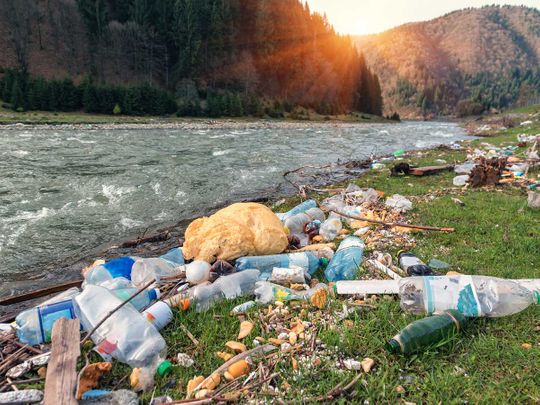
The global outcry against single-use plastics has put the issue of non-essential plastic consumption at the forefront of consumers’ minds. Customers are actively trying to reduce their consumption by switching to reusable cups, carrying around reusable bags, and looking for products with minimal plastic packaging.
The issue of waste is high on the UAE government’s radar as well. In 2018, the federal government outlined its vision to divert 75 per cent of waste away from landfills by 2021 through a policy of reusing, recycling and other ways of treating waste. This is part of the UAE’s holistic vision to achieve economic growth while also nurturing and protecting the environment.
This direction is certainly welcomed given a per capita consumption of plastic of 94kg yearly in the UAE and forecasts that this will continue to grow at 4 per cent per year. In Abu Dhabi and Dubai alone, more than 900,000 metric tonnes of plastic resin are used annually — 45 per cent in consumer packaging and 5 per cent in consumer goods.
This is a tremendous problem because most plastics don’t just ‘go away’. It sticks around and takes hundreds of years to degrade. Businesses involved in production and distribution of consumer goods in the UAE should reconsider their dependence on this material as we embark on the new decade.
Industries related to fishing, leisure and tourism, too, must assess the impact of plastic waste on valuable natural marine habitats on which their businesses rely.
In the context of the UAE’s efforts to solve the plastic problem, the circular economy calls for the design of new industry standards for packaging and a new approach to waste disposal in alignment with government regulations, consumer expectations and business priorities.
Globally, 8 million metric tonnes of plastic waste finds its way into our oceans, placing marine wildlife, fish, seabirds and sensitive habitats such as coral reefs, mangroves and seagrass beds at risk. In the Gulf, abandoned fishing nets and traps, or gargoors, have been identified as an additional threat to local populations of sea turtles and dugongs.
Plastic waste can have similar devastating effects on land as well. In the UAE, 50 per cent of camel deaths are caused by suffocation due to eating plastic waste that is littered across our deserts and camping sites, according to the Environment Agency, Abu Dhabi (EAD).
Protecting the environment is thus no longer just the right thing to do, it is also imperative for businesses’ financial interest.
The challenge ahead is too large for individuals or any one organisation or business to tackle alone. But together, it is possible to usher in a circular economy in which materials are designed to be re-used and maintained within the economy for longer.
Circular economy to save environment
The circular economy addresses two key issues with our current ‘take, make and dispose’ linear model. The first is the issue of waste management — how do we store, recycle, reuse or treat waste so that it does not clutter landfills, leak into natural habitats or pollute our food and water systems. The second is the issue of material wealth — the earth cannot replace natural resources fast enough to keep up with our current pace of consumption.
Simply put — we are running out of natural resources and must learn to conserve and reuse existing materials to ensure continued access in the decades (and centuries) to come.
Businesses around the globe have already begun to transform their operations in favour of a circular economy. In 2018, it was estimated that 9 per cent of the global economy is already circular. As the movement achieves scale, it has the potential to address some of our most pressing environmental and economic issues.
In the context of the UAE’s efforts to solve the plastic problem, the circular economy calls for the design of new industry standards for packaging and a new approach to waste disposal in alignment with government regulations, consumer expectations and business priorities. With our partners, Emirates Nature-WWF is developing several science-based resources and programmes to coordinate and accelerate these efforts.
— Srdan Susic is the director of conservation and climate at Emirates Nature-WWF










